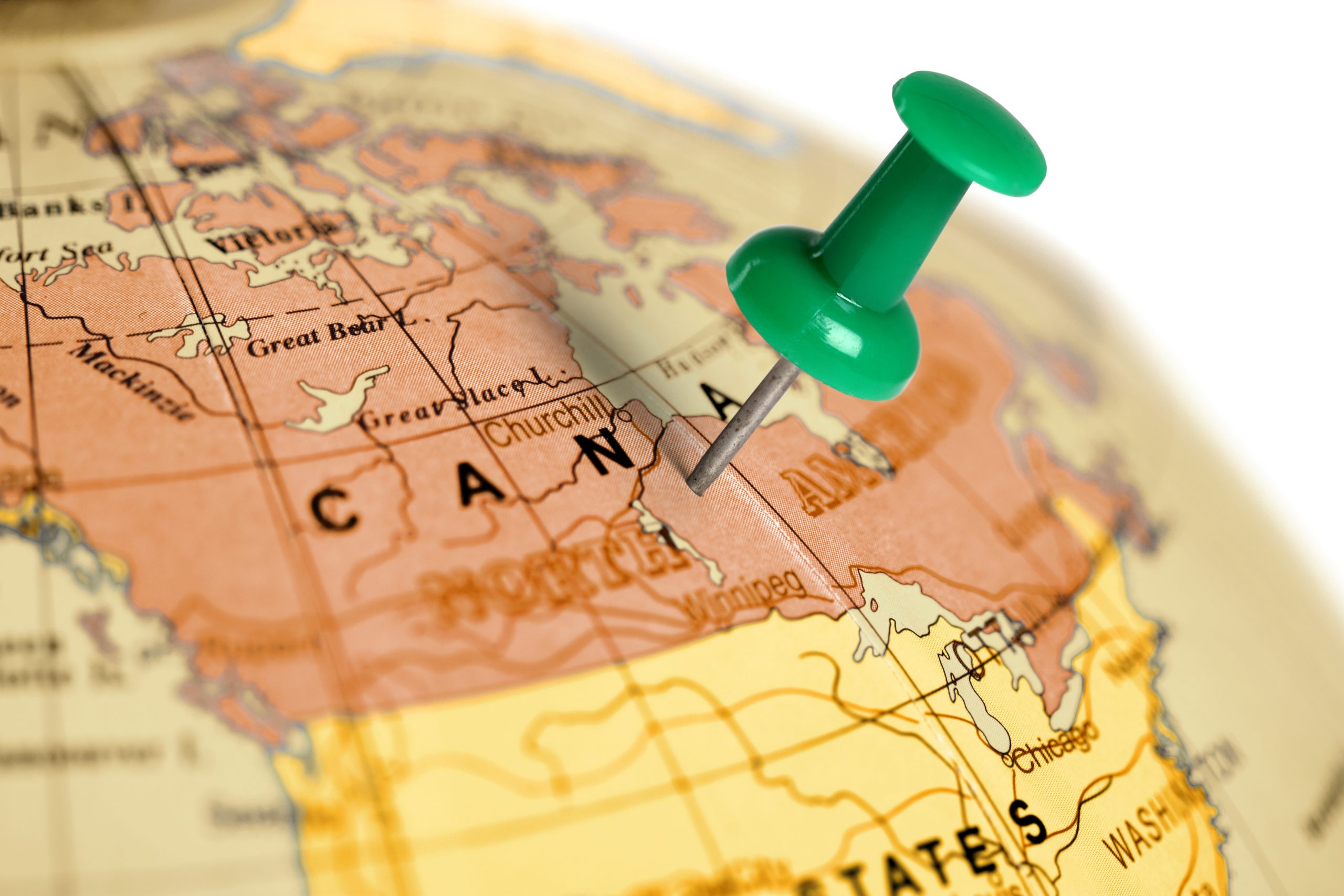by Beata Caranci, SVP & Chief Economist, & James Orlando, CFA, Director & Senior Economist, TD Economics
What's going to occur:
- On Tuesday, the U.S. will officially launch a tariff war with far reaching economic, geopolitical and financial market ramifications.
- The White House Fact Sheet behind the rationale cites the "extraordinary threat posed by illegal aliens and drugs, including deadly fentanyl, constitutes a national emergency under the International Emergency Economic Powers Act (IEEPA)."
- President Trump cites using America's trade position as leverage against countries to secure borders. In other words, these tariffs are seemingly unrelated to the U.S. trade deficit investigation underway to be completed on April 1st. This implies that even if one of the three targeted countries resolves this grievance, round two could quickly follow.
- Paradoxically, China will be spared the brunt of the punishment with an additional 10% tariff rate from current levels.
- Mexico and Canada will each face a 25% tariff across all goods except for Canadian energy resources at 10%.
- If interested in trade flows between the regions, please see here.
- The lower tariff rate on Canadian energy resources is likely because the administration is sensitive to risks related to price escalation at the pumps, where it is highly observable and carries immediate impacts to household budgets.
- At 10%, there is likely a gamble that U.S. refiners could absorb some (or all) the impact via profit margins.
- Importantly, Trump has indicated that should Canada retaliate, the U.S. can increase or expand the scope of duties.
- Officially, the order takes effect at 12:01am on February 4th.
Canada's "Twisted Sister" Moment: We're not gonna take it
- Provincial Premiers have been responding through the evening united and resolute, with each crafting individual retaliation measures that will continue to unfold in the days ahead. Some measures already reflect limiting provincial procurement by American firms and removing the sale of U.S. alcohol, skewed to "red states" among some provinces.
- Canada's Prime Minister, Trudeau, announced 25% tariffs on $155 billion of U.S. goods. Of this, $30 billion of goods will be affected on Tuesday. After 21 days, the remainder will be affected to allow Canadian companies and supply chains time to find alternatives.
- Non-tariff measures are also being reviewed with provinces and territories.
Tit-for-tat going off the rails?
- Given the U.S. "retaliation" clause to respond to Canada's retaliation… brace for a further escalation.
- Mexico has also responded with an intent to retaliate against the United States.
- Common sense, game theory dictates the only "reasonable" off-ramp to this tit-for-tat spiral is diplomatic negotiations or be prepared for all parties to end up on a permanently lower economic trajectory.
Assessing the economic risk:
- We have long said that the economic impact will depend on four factors:
- Depth: the size of the tariffs
- Breadth: the amount of goods that will face tariffs
- Retaliation: by trading partners with the same lens as #1 and #2
- Duration: the length of time tariffs remain in place
- Between Canada and the U.S., we now have a clear picture on the first three.
- Unfortunately, the key unknown, duration, is the most important of the four measures in determining the economic and financial market trajectory on both sides of the border.
- As it currently stands in rhetoric, there is no timeframe for the tariffs to be lifted, and various statements by President Trump suggest little negotiation room to de-escalate – albeit this is a negotiation tactic itself.
- We expect a sharp negative reaction in the Loonie and North American equity markets come Monday. We would not be surprised to see the currency flirt with at least 65 U.S. cents in relatively short order, with further downside risk as "duration" builds on tariffs.
- Likewise, both countries will experience a rise in inflation. Vehicle costs are particularly susceptible due to the interconnectivity on the supply chain. For details, see here.
- It is premature to estimate the central bank response. The Bank of Canada spilt a lot of ink within its Monetary Policy Report to evaluate the impact of U.S. tariffs and did not offer a conclusive view on whether interest rates would fall (or rise or stand pat). They will be closely monitoring the speed of transmission to inflation, inflation expectations, and the relative deterioration in the economy. Which of these forces ultimately dominate will inform the policy response.
- For the U.S. economy, tariffs will be escalating costs on roughly 40% of imported goods across three major economic regions, amounting to roughly 5% of GDP. Six months of tariffs at this level could see the economy grind to a halt. To put some figures behind this, during Trump's first term that skewed tariffs more heavily to China, the impact hit about $360 billion in imports. Today that figure is crossing $1.3 trillion.
- For Canada's economy, the situation is worse. Our calculations show if these tariffs are sustained for 5 to 6 months, it would officially tip the domestic economy into recession, albeit a relatively shallow one at that point. Further duration would naturally deepen the contraction. Likewise, the unemployment rate would cross the 7% threshold within that six-month period, instead of our baseline scenario from mid-December that saw it fall to 6.4%.
- However, these estimations do not account for the high likelihood that governments will buffer the economic impact via financial supports to households and businesses. We suspect the income side of household balance sheets will fare considerably better than a typical recession period.
- Governments of all political stripes across Canada are discussing large financial supports to households and businesses. We wouldn't be surprised to see provincial and federal governments revisit programs from the pandemic, such as wage subsidies, expanded EI, or job-sharing programs.
- Under current circumstances, doing so at the Federal level will require a request by PM Trudeau and approval by the Governor General to return the House to table legislation for a vote. Likewise, the Liberal government will require the support of another political party. This seems doable given recent rhetoric from the NDP.
- At the same time, the greater the income supports to insulate Canadians, the higher the possibility that inflationary pressures linger from tariffs. That's because it could limit an adjustment in domestic demand – a familiar narrative observed during the pandemic. However, the parallels to the pandemic are limited. That was an extreme situation exacerbated by global supply chain disruptions across every product and every country. Canadians this time have an ability to substitute on demand preferences to non-American products. This is important for governments to keep in mind when deciding on the size of fiscal supports. Unintended consequences can occur. Likewise, consideration should be provided to other policies that directly support broader business within Canada, like financing and incentives to invest, such as investment tax credits for all businesses, lower corporate tax rates and so forth.
- Regardless of the chosen programs, retaliatory tariff revenue collected by the Canadian government would provide a partial financial means to offset the financial obligation, which was also absent in prior periods.
- The intention of Trump's tariffs matters. If this is a negotiation tactic to spur action on border security, there is greater odds for Canadian government to shorten the duration of tariffs. The standoff with Colombia last week is an example. Tariffs and sanctions were avoided following the country agreeing to accept deported individuals from the U.S. That spat lasted for one day.
- Of course, Canada's situation is more complex with President Trump citing multiple factors related to border issues, drug production and trade deficits.
- The complexity of negotiations suggests tariffs could be in place for some time, even if deal-making succeeds in reducing the scope to fewer products and/or the depth.
- A more prolonged example occurred in 2018, when Trump imposed a 25% tariff on Canadian steel and 10% on aluminum. These tariffs remained in place for a year, causing Canadian steel exports to drop nearly 40% and aluminum exports to fall almost 20%.
- The bigger picture should not be lost amidst a U.S. administration that is dominating the airwaves. Canada ultimately needs to prevent future economic attacks, as there has been a broader shift in American policy towards protectionism, regardless of political stripe.
Regaining Control Through Vision, Credibility and Economic Resilience
- Governments need to unleash policies that have 1) a longer-term vision, 2) credibility and 3) create economic resilience. This is the only factor within Canada’s control. Every dollar sacrificed in a budget must have a high domestic multiplier and drive these three outcomes.
- Canadians are all too familiar with its lagging economic global position, weak productivity, and reduced business dynamism.
- Regaining control requires Canada to reflect:
- Significant tax competitiveness
- An immediate vertical and horizontal delayering of regulation – i.e. between provinces and within industries that is stifling innovation, technology adoption while adding to business costs. There should be no sacred cows.
- The responsible development of energy and critical minerals within timeframes that make economic sense in attracting capital and development.
- At the same time, maintain the full value-added supply chain of those resources (from mining to processing to shipment) rather than export that value, knowledge and technology to other countries.
- The existential question for Canada: What needs to be true to be a preferred destination of businesses, high valued labour and an injection of foreign financing? The answer does not lie in temporarily remediating a U.S. trade war.
Disclaimer
This report is provided by TD Economics. It is for informational and educational purposes only as of the date of writing, and may not be appropriate for other purposes. The views and opinions expressed may change at any time based on market or other conditions and may not come to pass. This material is not intended to be relied upon as investment advice or recommendations, does not constitute a solicitation to buy or sell securities and should not be considered specific legal, investment or tax advice. The report does not provide material information about the business and affairs of TD Bank Group and the members of TD Economics are not spokespersons for TD Bank Group with respect to its business and affairs. The information contained in this report has been drawn from sources believed to be reliable, but is not guaranteed to be accurate or complete. This report contains economic analysis and views, including about future economic and financial markets performance. These are based on certain assumptions and other factors, and are subject to inherent risks and uncertainties. The actual outcome may be materially different. The Toronto-Dominion Bank and its affiliates and related entities that comprise the TD Bank Group are not liable for any errors or omissions in the information, analysis or views contained in this report, or for any loss or damage suffered.
Copyright © TD Economics













